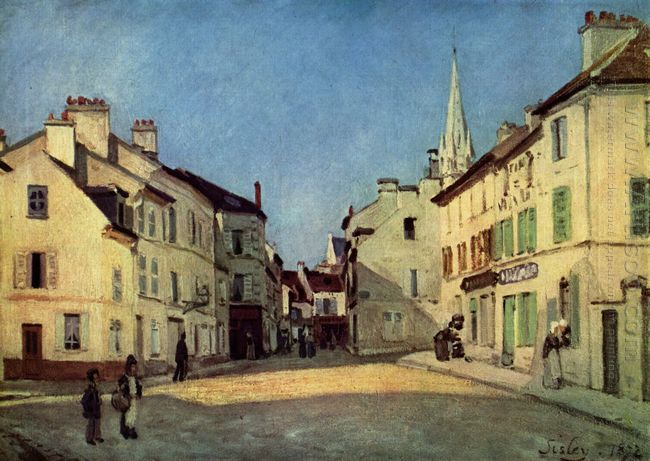Between 1872 and 1876, Sisley paintings were the most outstanding, and reached an unknown height. Platz in Argenteuil was made in 1872. This impressionism painting is now collected in Orsay Museum in Paris, France. His painting style was robust with highly skilled techniques and clear contrast color. His sharp eyes were able to see the subtle changes of the transition of color tone.
For Sisley, the rural scenery is not used to create the contrast basis, nor the life’s theme, but the relationship between the colors. In the painting of Platz in Argenteuil, yellow, rose and green highlighted the grey of the houses, and brown emphasized the tone of the earth, some roofs were brown and some were deep blue, which was set off by the bright pink blue sky. Sisley’s snow effect was not match with other works; I am quite sure about that.
If you compare this impressionism painting with the early works of Monet and Pissarro, what attracted to us was not only Sisley’s painting with more stability and nature, but also the kind of unique technique learned from Corot. Because his art was completely obedient to the feeling and not in line with showing any rapid establishment, so he was not ready to give a person with a long statement.
Several stay in the UK, the desire to be accepted by the salon and the poor life did not shake the belief of Sisley and make him change his painting style. Among his about 800 works, most were landscapes. His love for the nature and simple emotion were revealed in his creation. Pissarro said that Sisley was the purest impressionist painter, for he clung to the original painting idea — through the light and color performance to capture the natural scenery of instantaneous real impression.
